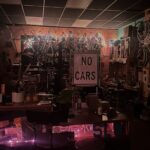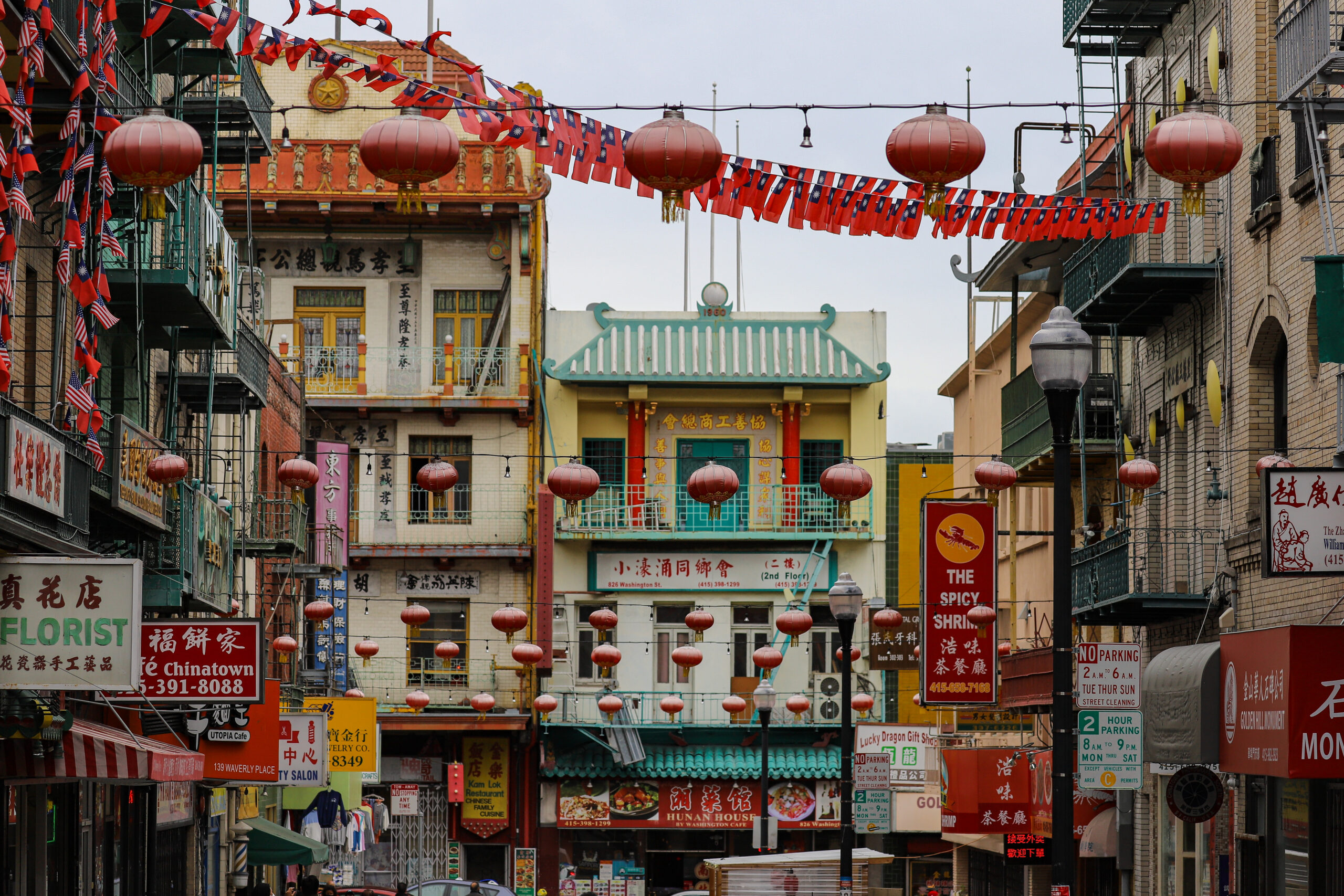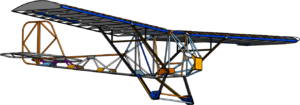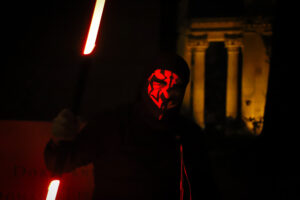
Photo by Gabe Castro-Root
At the intersection of Grant and Bush streets in San Francisco stands the often-photographed Dragon Gate. Known as the entrance to the oldest Chinatown in North America, it was built in 1969 as a gift from Taiwan. A male and female lion, made of stone, stand guard at the gate, and atop the structure is a creature resembling a koi fish. In Chinese culture, these animals symbolize power, protection, safety and prosperity. However, these descriptors would seem out of place if one were describing the Chinatown of the past.
Upon arrival on the West Coast, the Chinese mostly worked as gold miners, garment workers and laborers. With no other option, they often took extremely low-paying jobs to support themselves and their families abroad. Their work, most notably on projects such as the Transcontinental Railroad, was instrumental in building the infrastructure of America.
Unfortunately, first and second-generation white Americans saw things differently. To them, the Chinese were stealing job opportunities. This sentiment led to intense anti-Chinese racism, and it grew to the point where an ethnic enclave, Chinatown, was created in 1848. The city of San Francisco was segregated. Broadway, Bush, Kearny and Powell — the border streets of Chinatown — became imaginary border walls that Chinese people dared not cross. Beyond those streets was a city where the Chinese were not welcome.
With the intense adversity and racism they faced, the Chinese were on their own. In Chinatown, they worked to create a self-sustaining community that could stand up for itself and function smoothly. Family benevolent associations, many of which are still active in Chinatown, were founded to provide social and political support and fight discrimination. The Tung Wah Dispensary, now recognized as the San Francisco Chinese Hospital, was established in 1899 to provide quality health services to the underserved Chinese community. Even today, the San Francisco Chinese Hospital, which provides outstanding medical care, is the only institution of its kind in the United States. One of the most iconic buildings in Chinatown, at 743 Washington Street, housed another community institution, the Chinese Telephone Exchange. Though the building is now a bank and is recognized for its extravagant Oriental design, it was Chinatown’s hub of communication from 1894 to 1949. Switchboard operators, most of whom were women, connected phone calls around the neighborhood and were required to memorize over 3,000 phone numbers and speak six Chinese dialects.
Despite the measures taken by locals, Chinatown did not have a positive reputation in San Francisco. Organized crime was not uncommon, and prostitution, gambling and drug trafficking dominated the streets. When the 1906 San Francisco Earthquake destroyed most of the neighborhood, Chinatown leaders seized the opportunity to reinvent the tainted image of Chinatown and reinvigorate the neighborhood. Crime and other illegal activities were weeded out, and Chinatown’s main priority became attracting tourists, inviting them to immerse themselves in Chinese culture, food and practices. The neighborhood was transformed from a place of discrimination, racism and exclusion to a haven of beauty and cultural exploration.
Before the 1906 earthquake and its rebuild, Chinatown looked like any other neighborhood in the city. To attract tourists, Chinatown’s leaders wanted to make the neighborhood fit common stereotypes of Chinese architecture. They hired white architects to create a completely new style that would both fit what tourists were looking for and conform to some aspects of stereotypical Chinese architecture. Buildings were painted with vibrant colors and given a pagoda-like look with curled-up eaves and ornamental ironwork. This new architecture style defines the Chinatown we know today. While it is not traditional or authentic, the neighborhood feels like a mystical wonderland. And, for some, Chinatown is as close to China as they’ll ever get.

Photo by Gabe Castro-Root
If you are interested in exploring the architectural beauty of Chinatown, check out Waverly Place, also known as The Street of Painted Balconies. The buildings are colorful and decorative and red lanterns dangle above, creating a unique and lively ambiance. Some of the buildings on Waverly Place survived the 1906 earthquake, among them the Tin How Temple. The Taoist temple has been in operation for over 150 years and is one of the oldest operating Chinese temples in the United States.
Also on Waverly Place is Mister Jiu’s, a Michelin-starred restaurant that serves high-end Chinese cuisine. The restaurant’s owner, acclaimed celebrity chef Brandon Jew, grew up in San Francisco experiencing the food and culture of Chinatown. He masterfully combines Chinese cuisine with cues from his previous cooking experience. For example, he utilizes caviar in the traditional Cheung Fun, which is a Cantonese dish made of steamed rice noodle rolls.
Though Mister Jiu’s offers an open, modernized space for dining and has unique, upmarket food offerings, what I truly value about Chinatown — and grew up with — are the businesses and restaurants that have mastered the art of serving no-nonsense, traditional Chinese cuisine.

Photo by Gabe Castro-Root
The Golden Gate Fortune Cookie Factory, hidden away in a small alley, has been making fortune cookies in San Francisco since 1962. Walking along the street, you can already smell the sweet scent of the cookies being freshly baked. In the factory, which occupies a very narrow space, you can see the batter being injected onto a cast iron rotating griddle wheel and passing through an oven. While the cookie is still malleable, which is only for a few seconds, the factory staff folds the cookie into its signature shape and inserts the fortune. The cookies come in different flavors and sizes. Through the factory’s website, you can also write your own fortunes and make a custom order. A full bag of fortune cookies costs only a few dollars, and there are free samples as well.
Another well-known destination in Chinatown is the Golden Gate Bakery. Though they serve a variety of baked goods, from sesame balls to mooncakes, their main attraction is the egg tart, a Cantonese dessert inspired by the English custard tart and the Portuguese pastel de nata. The egg tart is made of an outer flaky crust filled with a light and airy egg custard. Lines at this bakery go down the block, but that also means that the egg tarts are almost always fresh out of the oven when you purchase them. Something to be aware of is that Golden Gate Bakery has very unclear hours. They may suddenly decide to close for a period of time and then suddenly reopen again. Have no fear, though! Check out the “Is Golden Gate Bakery Open Today?” Facebook group before you trek to the bakery. Another staple of Chinatown cuisine is the Good Mong Kok Bakery, famous for its take-out dim sum. Fan favorites include char siu bao, a barbeque pork bun, har gow, a shrimp dumpling and shumai, a pork and shrimp dumpling.
Unlike the Golden Gate Bakery, the Yuet Lee Seafood Restaurant on Stockton has consistent hours. It’s open every day of the week except Tuesdays from 11 a.m. until 1 a.m. With its Chinese lantern decorations, brightly painted exterior and cozy, casual feel, Yuet Lee blends right into the Chinatown restaurant scene. But, what sets it apart is its famous patrons. Since its founding in 1977, Yuet Lee has attracted high-profile customers such as Anthony Bourdain, Emeril Lagasse, Jackie Chan, Saveur Magazine and The New York Times. Bourdain’s favorite dish was the salt and pepper prawns, but other great options are beef chow fun, chicken in black bean sauce, curry beef brisket and salt and pepper calamari.

Photo by Gabe Castro-Root
After tasting the cuisine of Chinatown, you may need to go on a slow walk or find a place to relax to ease your full stomach. Portsmouth Square, San Francisco’s oldest public plaza and the Heart of Chinatown, is a great place for this. The square holds historical significance and is filled with items of historical interest, including plaques, markers and statues. Prior to the Mexican-American War, San Francisco was known as Yerba Buena. The city was inhabited by Spanish and Mexican settlers, and Portsmouth Square was the hub of the city. During the war, Americans occupied the square, and it was there where the first American flag was raised in San Francisco. In future years, the square continued to be a place of remarkable historical events. The first public school in California was established there, and the test runs for San Francisco’s iconic cable cars were conducted on its border streets. Most notably, it was at Portsmouth Square where the discovery of gold was revealed, leading to the mass migration of people, including the Chinese, to San Francisco. Chinatown was built on the perimeter of the square and, from there, grew into the neighborhood it is now. Today, Portsmouth Square is a favorite gathering place for locals. It’s the largest open space in a neighborhood that has a population density three times that of San Francisco as a whole. On a typical day, there may be a tai chi group exercising or elderly playing chess, cards and mahjong.
Another area to explore if you’re looking to immerse yourself in the local culture is Stockton Street. While it has a variety of shops, businesses and restaurants, Stockton is most popular for its fresh and cheap produce. Walking down the street, it can almost feel like you’re in a completely different city. Along the sidewalk on wooden tables are heaps of vegetables, fruits and herbs, and whole boxes of produce are left unattended. Locals walk from shop to shop, comparing prices and looking for the best quality items. The sidewalk is almost always busy, creating a unique sense of excitement and rush.
While each of these specific locations are worth visiting, I believe that a true Chinatown experience comes from wandering around and exploring the streets and alleys. Don’t set an agenda. Soak in the beauty of lanterns flowing with the wind; the aroma of egg tarts; and the background noise of elderly locals speaking in a language you don’t understand. All of these — combined with the dark history of Chinatown — will make you truly realize and appreciate the beauty of this neighborhood and its inhabitants.






